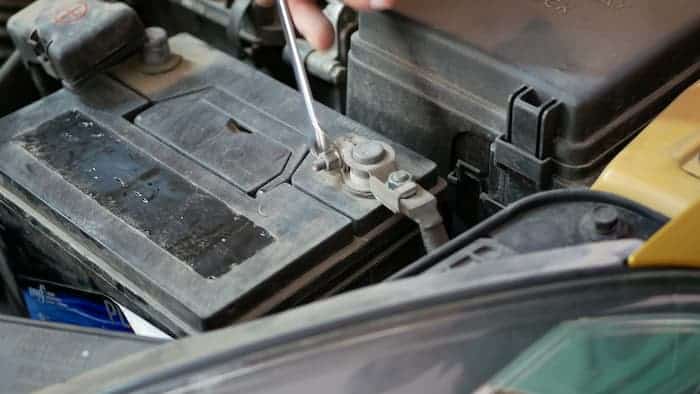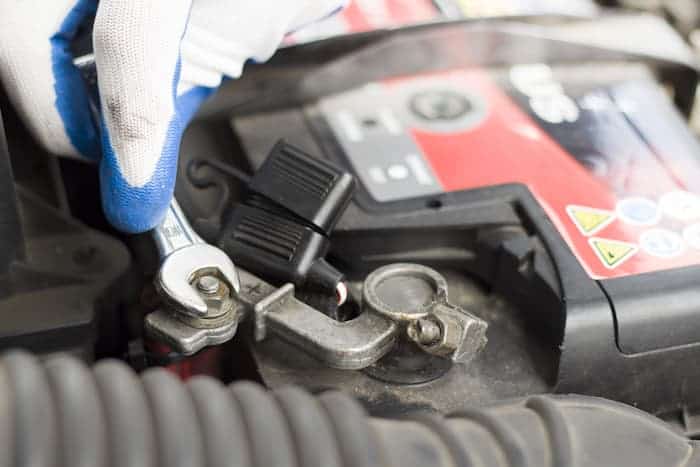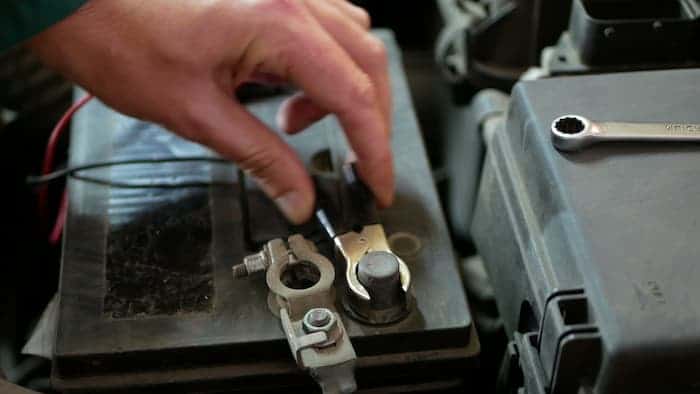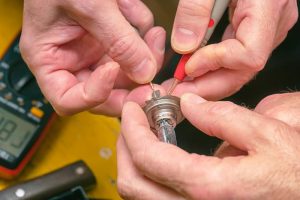You may need to disconnect your car battery at some point, whether to avoid damage, carry out your regular car maintenance, or replace it entirely. Disconnecting a car battery is a straightforward procedure that does not involve taking your vehicle to a repair or auto shop. This guide will teach you how to achieve it.
Let’s look at the exact steps you need to take to disconnect your car battery securely.
When do you need to disconnect a car battery

Car batteries are one of your vehicle’s most important components; however, they may need to be disconnected for a variety of reasons:
- To perform car maintenance: Some repair forms necessitate disconnecting the battery to avoid electrical problems or hazards to yourself and your vehicle.
- To recharge or replace the battery: Batteries need to be replaced regularly (usually every 2-5 years); hence disconnecting the battery is required for replacement. If your battery is dead and can’t be charged while situated in its holding tray, you’ll have to remove it and charge it separately. Alternatively, you can jump start your car battery if you are in a situation where you can’t charge.
Step be step to disconnect a car battery

Every automobile owner should know how to disconnect their car battery. Fortunately, it’s not a tough task, so follow along with us;
- Begin by turning off the ignition
Before disconnecting your battery, make sure your vehicle is turned off. When your vehicle is turned on, you should never try to disconnect the battery. We recommend using them if you have safety equipment on your hands, such as gloves and safety goggles.
- Identify the negative terminal on your car battery
Open your vehicle’s hood with the engine off using the release mechanism in the car’s interior or under the hood. Locate your car battery once it’s been opened. Two huge wires are attached to these large, block-like components at the engine bay’s surface. A car battery may be found in the trunk in some cases. If you’re having trouble finding it, look in your owner’s manual for the precise location of your car battery.
Locate the negative terminal after you’ve located the battery. It’s an electrical contact usually located on top of the battery and connected by a cable. A “-” symbol should indicate the negative terminal, whereas a “+” sign should be used to indicate the positive terminal. The negative terminal is similarly black and may be labeled with a black plastic cap, but the positive terminal is red and has a red plastic cover.
- Using a spanner, loosen the nut on the negative terminal
If your battery has plastic caps, remove them first, and then look for a spanner that fits the nuts and bolts on your battery connections.
Unfortunately, because no true universal size applies to all terminal devices, determining your spanner size without checking for yourself is difficult. We recommend having a spanner kit with various socket sizes for the job so you can find the proper one quickly. Before you locate the right socket wrench size, you may need to experiment with a few various sizes. Place the wrench on the nut on the negative terminal and turn it anti-clockwise to loosen it.
- Disconnect the negative connector first, then the positive connector
Disconnect the negative connector cable from the battery after loosening the screw. It’s necessary that this cable is completely out of the way and that it does not come into touch with the battery until you’re ready. The cables on some modern vehicles are “seized” or fastened to the battery tray. In certain circumstances, a battery cable removal tool may be required to remove the negative terminal completely. If your battery requires one, check with your local auto parts store to see if they have one on hand.
After removing the negative connector, go ahead and do the same thing with the positive connector. Ensure that the cable is pushed far away from the battery and out of touch.
- Take out the battery if necessary
Your battery should be completely disconnected at this point. However, you may need to remove the battery from the tray for maintenance or replace it with a new one. Your battery is most likely held in place by a fastening clamp on the top of the unit. The clamp will be held in place with its own set of nuts. Remove the nuts using a socket wrench, then take the locking clamp away from the battery.
With your hands or the handle attached to the battery, you should be able to remove it out of the tray (if applicable). The majority of people who have never replaced a car battery are shocked at how heavy they are. Car batteries are quite hefty, weighing between 30 and 50 pounds.
The battery has been disconnected from the engine and cannot operate your car at this point. Depending on your demands, you can perform maintenance or replace the battery with a new one. If you want to remove your battery to charge it, you can do so now.
Summary
The easy steps outlined above will allow you to handle battery maintenance without paying excessive fees at an auto repair shop now that you have the knowledge you need to disconnect your battery. Keeping this in mind, make sure you take all appropriate safety precautions during the exercise as your ability to care for your battery would determine how long your car battery lasts. Aside from making sure your car battery is in great condition which by the way is important, caring for your car’s headlights by restoring them regularly using a headlight restoration kit is also recommended.






